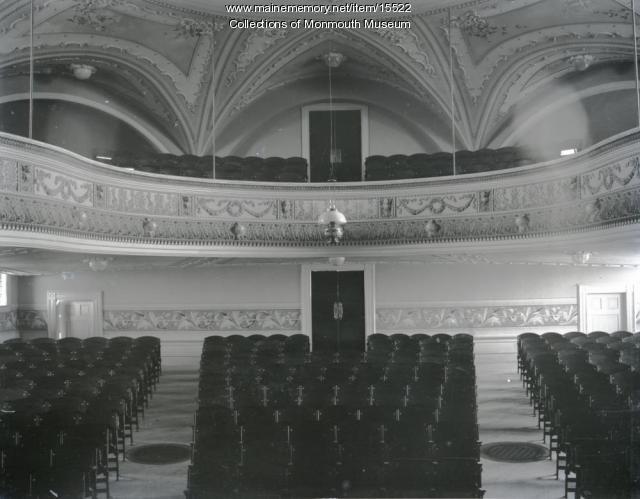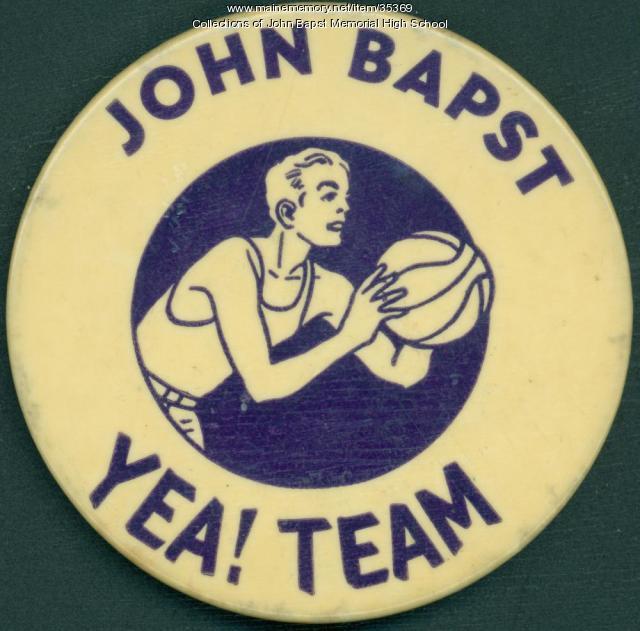Keywords: 19th Century
- Historical Items (702)
- Tax Records (2)
- Architecture & Landscape (2)
- Online Exhibits (112)
- Site Pages (199)
- My Maine Stories (6)
- Lesson Plans (9)
Online Exhibits
Your results include these online exhibits. You also can view all of the site's exhibits, view a timeline of selected events in Maine History, and learn how to create your own exhibit. See featured exhibits or create your own exhibit
Exhibit
Music in Maine - Longfellow Family Music
"… different pianos—rare luxury items in the early 19th century—over generations. During the War of 1812, Henry asked his father to send him a drum…"
Exhibit
Settlers' clothing had to be durable and practical to hold up against hard work and winters. From the 1700s to the mid 1800s, the women of Maine learned to sew by making samplers.
Exhibit
In Maine, like many other states, a newly formed Ku Klux Klan organization began recruiting members in the years just before the United States entered World War I. A message of patriotism and cautions about immigrants and non-Protestants drew many thousands of members into the secret organization in the early 1920s. By the end of the decade, the group was largely gone from Maine.
Exhibit
Rum, Riot, and Reform - Women Leaders and Temperance
"… 1998 Pamphlet 2542 X Tee Total Plate mid 19th century Earthenware with transfer printing Courtesy of the Charles E."
Exhibit
Maine's natural resources -- granite, limestone and slate in particular -- along with its excellent ports made it a leader in mining and production of the valuable building materials. Stone work also attracted numerous skilled immigrants.
Exhibit
Lewiston, Maine's second largest city, was long looked upon by many as a mill town with grimy smoke stacks, crowded tenements, low-paying jobs, sleazy clubs and little by way of refinement, except for Bates College. Yet, a noted Québec historian, Robert Rumilly, described it as "the French Athens of New England."
Exhibit
From French Canadians to Franco-Americans
French Canadians who emigrated to the Lewiston-Auburn area faced discrimination as children and adults -- such as living in "Little Canada" tenements and being ridiculed for speaking French -- but also adapted to their new lives and sustained many cultural traditions.
Exhibit
Longfellow: The Man Who Invented America
Henry Wadsworth Longfellow was a man and a poet of New England conscience. He was influenced by his ancestry and his Portland boyhood home and experience.
Exhibit
George Popham and a group of fellow Englishmen arrived at the mouth of the Kennebec River, hoping to trade with Native Americans, find gold and other valuable minerals, and discover a Northwest passage. In 18 months, the fledgling colony was gone.
Exhibit
Music in Maine - Opera, Orchestras and Stages
"… Maine's Opera Houses Many Maine towns in the 19th and early 20th centuries had an “opera house,” used as multi-purpose community meeting spaces…"
Exhibit
Maine Medical Center, Bramhall Campus
Maine Medical Center, founded as Maine General Hospital, has dominated Portland’s West End since its construction in 1871 on Bramhall Hill. As the medical field grew in both technological and social practice, the facility of the hospital also changed. This exhibit tracks the expansion and additions to that original building as the hospital adapted to its patients’ needs.
Exhibit
John Bapst High School was dedicated in September 1928 to meet the expanding needs of Roman Catholic education in the Bangor area. The co-educational school operated until 1980, when the diocese closed it due to decreasing enrollment. Since then, it has been a private school known as John Bapst Memorial High School.
Exhibit
A Brief History of Colby College
Colby originated in 1813 as Maine Literary and Theological Institution and is now a small private liberal arts college of about 1,800 students. A timeline of the history and development of Colby College from 1813 until the present.
Exhibit
Throughout the history of the state, residents have protested, on paper or in the streets, to increase rights for various groups, to effect social change, to prevent social change, or to let their feelings be known about important issues.
Exhibit
Navy Firefighting School, Little Chebeague Island
Little Chebeague Island in Casco Bay was home to recreational facilities and a firefighting school for WWII sailors. The school was part of a Navy effort to have non-firefighting personnel knowledgeable in dealing with shipboard fires.
Exhibit
Father John Bapst: Catholicism's Defender and Promoter
Father John Bapst, a Jesuit, knew little of America or Maine when he arrived in Old Town in 1853 from Switzerland. He built churches and defended Roman Catholics against Know-Nothing activists, who tarred and feathered the priest in Ellsworth in 1854.
Exhibit
A Celebration of Skilled Artisans
The Maine Charitable Mechanic Association, an organization formed to promote and support skilled craftsmen, celebrated civic pride and members' trades with a parade through Portland on Oct. 8, 1841 at which they displayed 17 painted linen banners with graphic and textual representations of the artisans' skills.
Exhibit
Music in Maine - Community Music
"… voting rights long before the ratification of the 19th Amendment in 1920. At its height in 1907, Maine had 417 Granges with 55,212 members , the…"
Exhibit
The boundaries of Maine are the product of international conflict, economic competition, political fights, and contested development. The boundaries are expressions of human values; people determined the shape of Maine.
Exhibit
Art of the People: Folk Art in Maine
For many different reasons people saved and carefully preserved the objects in this exhibit. Eventually, along with the memories they hold, the objects were passed to the Maine Historical Society. Object and memory, serve as a powerful way to explore history and to connect to the lives of people in the past.
Exhibit
The Advent of Green Acre, A Baha'i Center of Learning
The Green Acre Baha'i School began as Green Acre Conferences, established by Sarah Jane Farmer in Eliot. She later became part of the Baha'i Faith and hosted speakers and programs that promoted peace. In 1912, the leader of the Baha'i Faith, 'Abdu'l-Baha, visited Green Acre, where hundreds saw him speak.
Exhibit
Early Fish Canneries in Brooklin
By the 1900s, numerous fish canneries began operating in Center Harbor, located within the Brooklin community. For over thirty years, these plants were an important factor in the community.
Exhibit
Memorializing Civil War Veterans: Portland & Westbrook
Three cemeteries -- all of which were in Westbrook during the Civil War -- contain headstones of Civil War soldiers. The inscriptions and embellishments on the stones offer insight into sentiments of the eras when the soldiers died.
Exhibit
The National Federation of Business and Professional Women's Clubs (NFBPWC) held their seventh annual convention in Portland during July 12 to July 18, 1925. Over 2,000 working women from around the country visited the city.
























